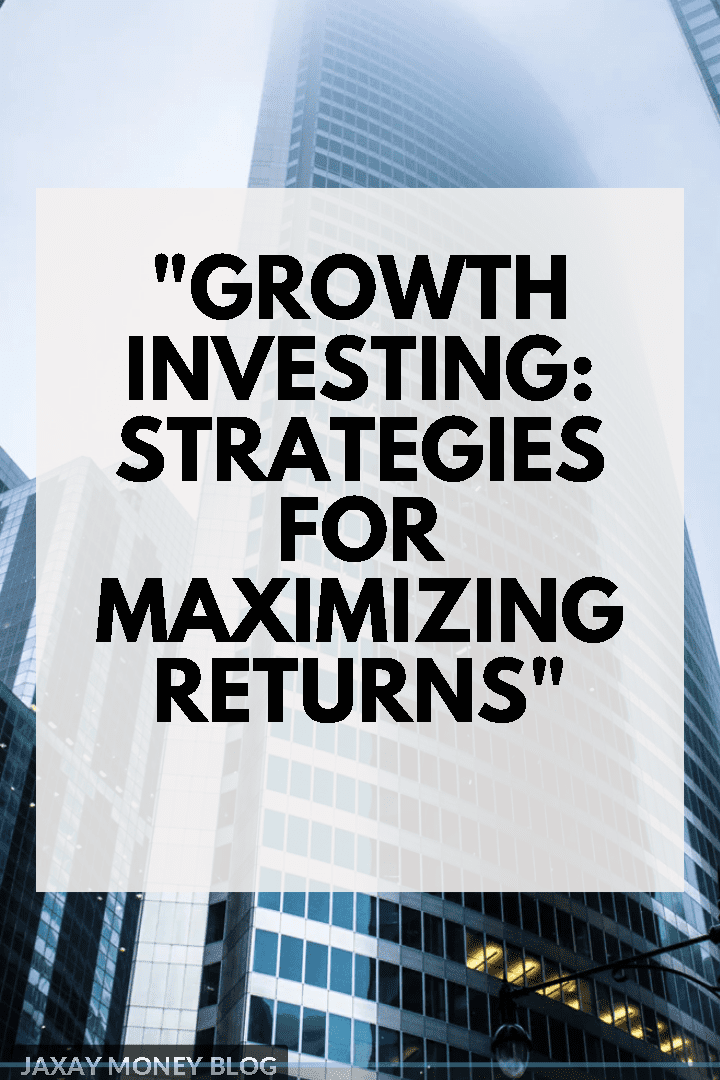Growth Investing: Strategies for Maximizing Returns
Explore the world of growth investing and learn how to identify stocks with the potential for significant appreciation. This blog covers key strategies, metrics for evaluating growth stocks, and the risks involved. Whether you’re new to investing or looking to refine your approach, this guide will help you tap into high-growth opportunities.

Growth investing is a popular investment strategy focused on identifying companies expected to grow at an above-average rate compared to their industry or the overall market. This approach can yield impressive returns, especially when targeting large-cap stocks—established companies with a market capitalization of over $10 billion. In this blog, we’ll delve into growth investing, explore the advantages of focusing on large-cap stocks, and share strategies to help you succeed.
What is Growth Investing?
At its core, growth investing involves selecting stocks that show promise for significant growth in revenue and earnings. Growth investors typically look for companies reinvesting profits to fuel expansion, innovate, and capture market share. Unlike value investors, who seek undervalued stocks, growth investors are willing to pay a premium for shares of companies they believe will deliver substantial future growth.
Why Focus on Large-Cap Stocks?
Stability: Large-cap stocks tend to be more stable than their smaller counterparts. These companies have established market positions, a proven track record, and the financial resources to weather economic downturns.
Access to Resources: Large-cap companies often have greater access to capital for research and development, allowing them to innovate and expand their operations more effectively than smaller firms.
Consistent Performance: Many large-cap stocks have historically delivered consistent revenue and earnings growth, making them attractive candidates for growth investors looking for reliability alongside potential returns.
Dividends: While not all growth stocks pay dividends, many large-cap companies do. This can provide an additional source of income while you wait for the stock price to appreciate.
Strategies for Successful Growth Investing
Identify High-Potential Sectors: Focus on industries poised for growth, such as technology, healthcare, and renewable energy. These sectors often have companies that are innovating and expanding rapidly.
Analyze Financial Metrics: Look for companies with strong revenue growth, improving profit margins, and positive cash flow. Key metrics include earnings per share (EPS) growth and the price-to-earnings (P/E) ratio, which can indicate how much investors are willing to pay for a company’s future growth potential.
Stay Informed: Keep up with market trends and news that could impact your investments. Understanding macroeconomic factors and industry developments will help you make informed decisions.
Diversify Your Portfolio: While it’s essential to focus on growth stocks, don’t put all your eggs in one basket. Diversifying across sectors and industries can help mitigate risks and enhance your portfolio’s overall performance.
Be Patient: Growth investing is a long-term strategy. While some stocks may experience short-term volatility, focusing on the long-term potential is crucial for success.
Conclusion
Growth investing, particularly in large-cap stocks, can offer significant opportunities for investors seeking to maximize returns. By focusing on companies with strong growth potential and leveraging strategic analysis, you can build a robust portfolio that positions you for success. Remember, the key to effective growth investing lies in patience, research, and a willingness to adapt to changing market conditions. Happy investing!
Oct 12th 24